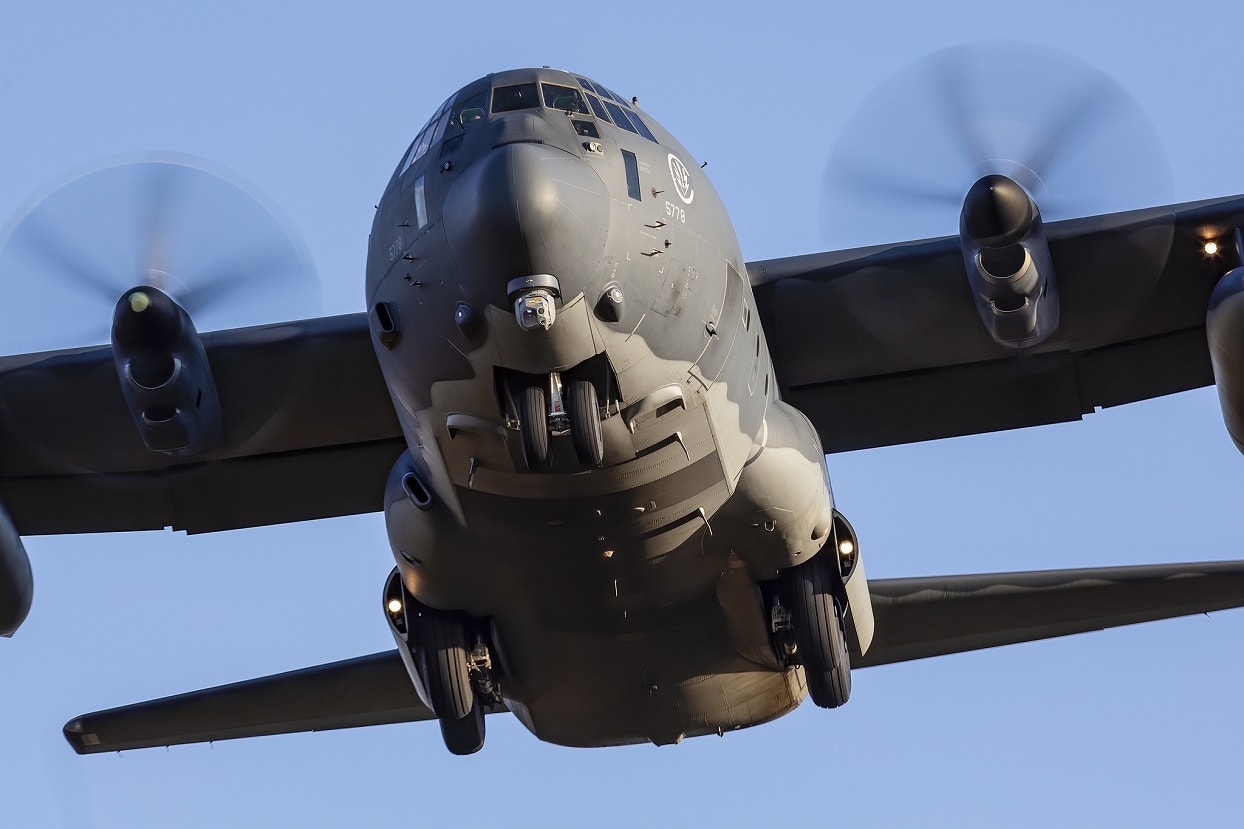The Lockheed C-130 Hercules is currently enjoying the longest production run of any military aircraft ever: At 68 years and counting, the C-130 is tried and true. The four-prop transport aircraft, which debuted in 1954, was designed to be versatile and rugged – even capable of operating from unprepared runways. The C-130 has proven its mettle in various roles, in numerous conflicts, and with 60 different nations around the world. Indeed, the C-130 has quietly become a legend of military aviation.
During the Korean War, U.S. forces were still relying on their World War II transport aircraft inventory – planes like the Fairchild C-119 Flying Boxcar, Douglas C-47 Skytrain, and Curtiss C-46 Commando. The inadequacy of this outdated transport aircraft became apparent during the conflict, prompting the U.S. Air Force to issue a General Operating Requirement for a new transport aircraft. The new plane needed to carry either 92 passengers, 72 combat troops, or 64 paratroopers in a cargo compartment measuring 41 feet long, 9 feet high, and 10 feet wide. And unlike outdated military cargo aircraft, the new plane would need to be loaded from a hinged ramp at the fuselage’s rear.
Lockheed won the bid for the General Operating Requirement and began building the C-130 – a slower, lower-flying type of aircraft than Lockheed was used to producing at the time. The first batch of C-130A aircraft was delivered in 1956, too late to participate in Korea.
The C-130 made its combat debut in 1958. It was an episode of geopolitical consequence.
In September of that year, a C-130 from 7406th Support Squadron was conducting a recon mission along the Turkish-Armenian border. The plane was scheduled to fly parallel to the Soviet border (Armenia) without coming closer than 100 miles to the border itself. But the C-130 did fly within 100 miles of the Soviet border – in fact, it crossed right over the line and entered Soviet airspace. No one knows why. Perhaps the C-130 crew misidentified a radio beacon and followed it into the USSR. Maybe the C-130 crew simply decided to cross over for the sake of gathering intelligence. Some officials, including high-profile NSA defectors William Hamilton Martin and Bernon F. Mitchell, believed the C-130 trespass was a sanctioned mission designed to gain a better understanding of Soviet defense systems.
All of this is speculation. What is known is that once the C-130 crossed the line, it was engaged by four Soviet MiG-17s. The small, agile, lethal Soviet fighters probably made quick work of the cargo transport. The Soviets confirmed the plane’s crash and the deaths of the six flight crew, and they repatriated the remains. However, there was also 11 intelligence-gathering personnel on board the C-130. The Soviets never acknowledged the deaths of the intelligence workers – and never repatriated the bodies.
After the fall of the Soviet Union, a U.S. team excavated the crash site, finding hundreds of skeletal fragments, presumably of all 17 crew members. Two of the bodies were formally identified. The remains were taken back to America and interred during a group burial at Arlington National Ceremony.
Most of the C-130’s service life has been less dramatic. The cargo transport has reliably served in every conflict since Vietnam. Continuously upgraded throughout its service life, the C-130’s J-variant is now in production, featuring comprehensive updates to the engines and avionics.
Harrison Kass is the Senior Defense Editor at 19FortyFive. An attorney, pilot, guitarist, and minor pro hockey player, he joined the US Air Force as a Pilot Trainee but was medically discharged. Harrison has degrees from Lake Forest College, the University of Oregon, and New York University. He lives in Oregon and listens to Dokken. Follow him on Twitter @harrison_kass.

